Commedia dell'arte: Part One
We have been presenting a series on Doll Making by Octogenarian Andrea and today's dolls from Andrea are truly amazing. In this series on dolls we are building up to a finale where you will see the most incredible dolls illustrating a C11th narrative from the world of ancient Japan.
But today we journey with Andrea to Italy and see her interpretation of Commedia dell'arte.
I will let Andrea explain the background to the characters and how she made these dolls.
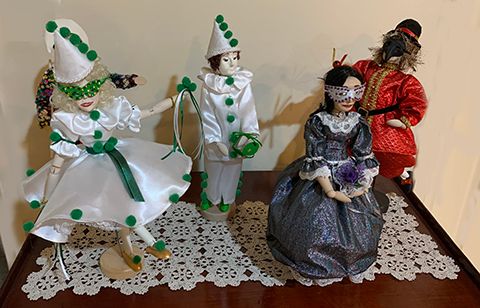
The history of the Commedia dell'arte can be read on the internet, but briefly, it originated in Italy and was popular in Europe from the 16th - 18th centuries. It has been described as an early form of professional theatre.
There are many characters, with the best known being Harlequin, Pierrot, Pierrette, Columbine and Pulcinella (also called Puncinella).
Through the ages the costumes have varied, as can be seen by the many illustrations on the Internet, and these helped me to choose how to dress the dolls.
Below are some examples of the variations in the costume of Harlequin. Please follow this link to learn more about the History of the Coomedia dell'arte.
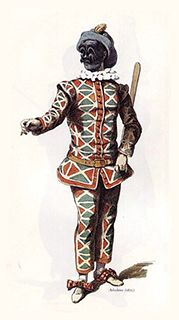
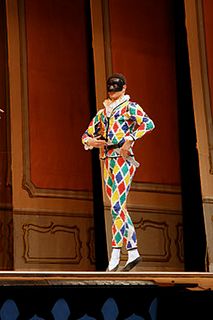
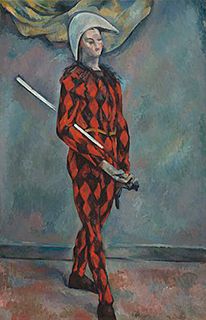
Harlequin (above) is nearly always portrayed in a multi-coloured or spangled costume with his head gear either a hat or a skull cap.
Pierrot and Pierrette are usually in white, with or without a hat.
Columbine and Pulcinella (Puncinella) have the most varied costumes - many styles appear in illustrations.
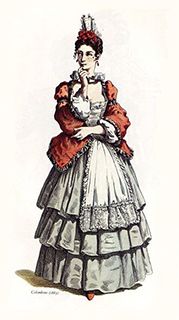
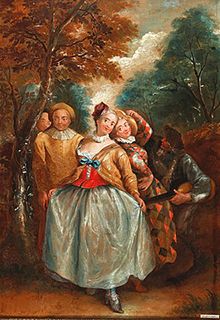
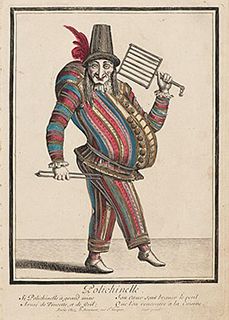
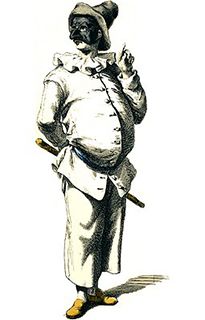
From my reading of novels, in the early 20th Century costumes for Harlequin, Pierrot and Pierrette were very popoular for fancy dress parties. By this time Harlequin's outfit was a slim-fitting garment of multi-coloured diamond patterned material and a black skull cap. Both Pierrot and Pierrette appeared in white trimmed with green pom-poms and possibly a hat (or in the case of Pierrot a skull cap).
For my dolls I used small wooden, posable artist's models. The faces of these models are faceless, so I made heads from paperclay1 as follows:
I tied a piece of clingwrap over the head and then over that modelled a head in paperclay. When it had firmed I cut it from ear to ear, removed it from the wooden head and left it to dry. I then glued it onto the head and when it was dry sandpapered it smooth and finally painted it.
The visible parts of the models I painted to represent skin, stockings, shoes. The hair was glued on last, after the dolls were dressed.
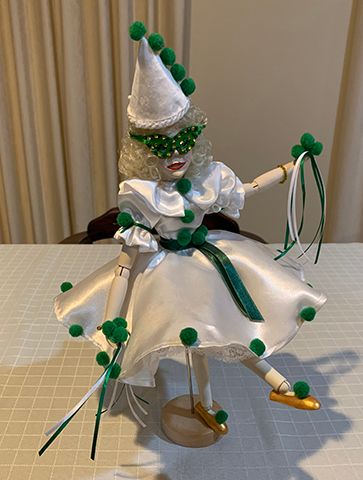
Tomorrow Andrea presents the making of her Commedia dell'arte dolls.
Footnote
1. Paper clay is any clay body to which processed cellulose fiber has been added. Earthenware, terra cotta, stoneware, porcelain and bone china clay bodies can be made into paper clay. The more fiber added to the clay body, the stronger the unfired dry paper clay, but the weaker the fired body. (Credit: en.wikipedia.org)
© Thank you to Octogenarian Andrea who kindly gave permission for the images of her work and explanation to be shared on AnArt4Life.
